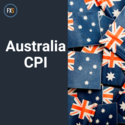The FOMC shocked the markets with a more hawkish than expected stance last week. So too did the BoE, while recent comments from the ECB and BoC also indicate they are starting to move toward the exit. Policymakers are still focusing on inflation and growth dynamics as their guides. But with the traditional Phillips Curve relationship seemingly broken, it could be a bumpy ride for central bankers and the markets as exit strategies are mapped out.
United States: This week’s Fedspeak will be especially interesting after the 180 degree shift from the FOMC where policymakers took a decidedly hawkish spin despite soft inflation and real sector data. The Fed showed surprising resolve in its actions as it looked past the recent data disappointments after the tepid 1.2% GDP growth clip in Q1. The contingent of speakers includes several FOMC voters. On the data front, housing numbers will be scrutinized after the larger than expected 5.5% drop in housing starts in May. Existing home sales for May (Wednesday) are forecast rising 0.9% to a 5.620 mln rate after tumbling 2.3% to 5.570 mln in April. New home sales (Friday) for April are projected rebounding to a 0.580 mln rate after plunging 11.4% to 0.569 mln in April. Other data this week includes the Q1 current account (Tuesday), with the deficit expected to fall to -$128.6 bln from Q4’s -$112.4 bln. There’s also the April FHFA home price index (Thursday), the Markit manufacturing PMI (Friday), the KC Fed manufacturing survey (Thursday), and weekly jobless claims.
Canada: Canada’s calendar has wholesale trade (Tuesday), with shipment values expected to expand 0.5% m/m in April after the 0.9% bounce in March. Retail sales (Thursday) are seen growing 0.4% m/m in April. Higher gasoline prices should support retail sales, but weaker vehicle sales will weigh. The CPI (Friday) is expected to slow to a 1.4 y/y pace in May from the 1.6% growth rate that was in place during March and April. CPI is projected to grow 0.1% m/m in May after the 0.4% gain in April, as a drop-in gasoline prices weighs. There is nothing on the BoC’s schedule this week. The CPI report could impact, although Wilkins appeared unworried by the weakness in the core CPI, blaming it on past activity. Hence, another round of soft core inflation would not challenge the widespread perception that rate hikes will come sooner than had previously been expected.
Europe: The start of official Brexit negotiations has finally arrived. Today Michael Barnier, the European Commission’s Chief Negotiator and David Davis, Secretary of State for Exiting the European Union, will launch Article 50 negotiations. EU 27 leaders will meet on June 22 to review the latest developments in the negotiations and in the margins of this meeting. The start of the talks may be dominated by political posturing, ultimately a hard approach from either side would only hurt the whole of Europe and an amicable deal will be in everybody’s interest. However the data calendar is pretty quiet. Preliminary Markit June PMI readings (Friday) will be the main highlights. Eurozone current account and BoP data are slated, along with preliminary consumer confidence for June. There’s also German PPI, and the final print on French Q1 GDP, expected to be confirmed at 0.4% q/q, as well as the national business confidence report. Supply comes from Germany, which issues 30-year Bunds on Thursday. The ECB’s latest economic bulletin meanwhile is likely to give merely a more detailed account of the ECB’s latest economic projections, which Draghi already presented at the last policy meeting.
UK: Data last week had shown a more acute negative growth figure, while recent sterling gains and weaker oil prices should help curb inflationary pressures, potentially offsetting hawkish arguments at the BoE. There is also the issue of a delicate political backdrop, with a much-weakened prime minister having to cobble together a deal with the DUP, a small party, in an attempt to make her minority government work. Brexit is yet another uncertainty, with negotiations due to begin on Monday. The UK calendar this week is fairly quiet. Monthly government borrowing data are due (Wednesday), while the June CBI industrial trend survey (Thursday) will highlight. A dip to a reading of +7 is expected in the total orders headline of the CBI survey, after +9 in the month prior.
Japan: The May trade report (Monday) is expected to reveal a surplus of JPY 100.0 bln, versus the JPY 481.1 bln previously. The April all-industry index (Wednesday) should rise 1.0% m/m from the prior 0.6% decline. Also, the BoJ releases the minutes to its April 26, 27 meeting (Wednesday), and Governor Kuroda will speak at the annual meeting of the National Association of Shinkin Banks. Deputy Governor Iwata will speak at a meeting of business leaders (Thursday).
Australia: Australia’s calendar is sparse this week. The Reserve Bank of Australia releases the minutes to the June meeting (Tuesday), where rates were held steady at 1.50%. The lack of change was expected, while the Bank maintained a note of optimism on the inflation and unemployment outlook. RBA Governor Lowe participates (Monday) in a discussion panel at the 2017 Crawford Australian Leadership Forum in Canberra. The Q1 Housing Price Index is due Tuesday, and will be of interest.
New Zealand: New Zealand’s calendar is highlighted by the Reserve Bank of New Zealand’s meeting (Thursday). No change is expected to the current 1.75% rate setting. It’s been at this level since the predicted easing on November 10.
Disclaimer: Nothing in this communication contains, or should be considered as containing, an investment advice or an investment recommendation or a solicitation for the purpose of purchase or sale of any financial instrument.
Recommended Content
Editors’ Picks
AUD/USD rises to two-day high ahead of Aussie CPI

The Aussie Dollar recorded back-to-back positive days against the US Dollar and climbed more than 0.59% on Tuesday, as the US April S&P PMIs were weaker than expected. That spurred speculations that the Federal Reserve could put rate cuts back on the table. The AUD/USD trades at 0.6488 as Wednesday’s Asian session begins.
EUR/USD holds above 1.0700 on weaker US Dollar, upbeat Eurozone PMI

EUR/USD holds above the 1.0700 psychological barrier during the early Asian session on Wednesday. The weaker-than-expected US PMI data for April drags the Greenback lower and creates a tailwind for the pair.
Gold price cautious despite weaker US Dollar and falling US yields

Gold retreats modestly after failing to sustain gains despite fall in US Treasury yields, weaker US Dollar. XAU/USD struggles to capitalize following release of weaker-than-expected S&P Global PMIs, fueling speculation about potential Fed rate cuts.
Ethereum ETF issuers not giving up fight, expert says as Grayscale files S3 prospectus

Ethereum exchange-traded funds theme gained steam after the landmark approval of multiple BTC ETFs in January. However, the campaign for approval of this investment alternative continues, with evidence of ongoing back and forth between prospective issuers and the US SEC.
Australia CPI Preview: Inflation set to remain above target as hopes of early interest-rate cuts fade

An Australian inflation update takes the spotlight this week ahead of critical United States macroeconomic data. The Australian Bureau of Statistics will release two different inflation gauges on Wednesday.
